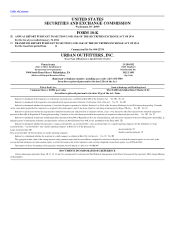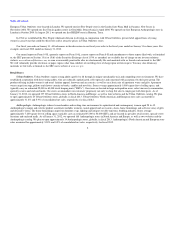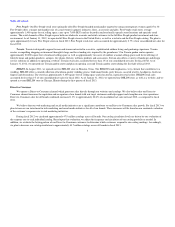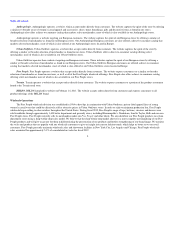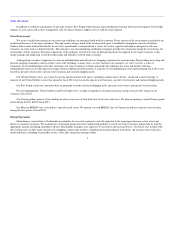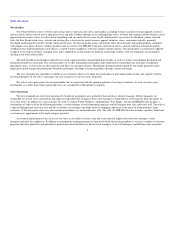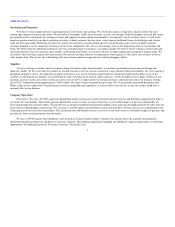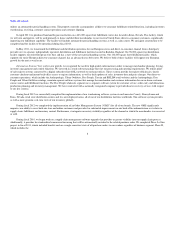Urban Outfitters 2012 Annual Report Download - page 12
Download and view the complete annual report
Please find page 12 of the 2012 Urban Outfitters annual report below. You can navigate through the pages in the report by either clicking on the pages listed below, or by using the keyword search tool below to find specific information within the annual report.
Table of Contents
implementation of a sourcing management module, is anticipated to be completed during the third quarter of fiscal 2013. This functionality allows our
production department to receive component level cost options and work-in-process updates from our vendors in real time
Competition
The specialty retail, direct-to-consumer and the wholesale apparel businesses are each highly competitive. Our retail stores compete on the basis of,
among other things, the location of our stores, the breadth, quality, style, and availability of merchandise, the level of customer service offered and
merchandise price. Although we feel the eclectic mix of products offered in our retail stores helps differentiate us, it also means that our Urban Outfitters,
Anthropologie, Free People, Terrain and BHLDN stores compete against a wide variety of smaller, independent specialty stores, as well as department stores
and national specialty chains. Many of our competitors have substantially greater name recognition as well as financial, marketing and other resources. Our
Anthropologie, Free People and BHLDN stores also face competition from small boutiques that offer an individualized shopping experience similar to the one
we strive to provide to our target customers. In addition, some of our suppliers offer products directly to consumers and certain of our competitors.
Along with certain retail segment factors noted above, other key competitive factors for our direct-to-consumer operations include the success or
effectiveness of customer mailing lists, response rates, catalog presentation, merchandise delivery and website design and availability. Our direct-to-consumer
operations compete against numerous websites and catalogs, which may have a greater volume of circulation and web traffic or more effective marketing
through online media and social networking sites.
Our Free People wholesale business competes with numerous wholesale companies based on the quality, fashion and price of our wholesale product
offerings. Many of our wholesale business competitors' products have a wider distribution network. In addition, certain of our wholesale competitors have
greater name recognition, financial and other resources.
Trademarks and Service Marks
We are the registered owner in the United States of certain service marks and trademarks, including, but not limited to "Urban Outfitters",
"Anthropologie", "Free People", "BHLDN", "Terrain", "BDG Guaranteed Tough", "Co-Operative", "Deletta", "Ecote", "Eloise", "Idra", "Intimately Free
People", "Odille", "Urban Renewal" and "Urbn.com". Each mark is renewable indefinitely, contingent upon continued use at the time of renewal. In addition,
we currently have pending registration applications with the U.S. Patent and Trademark Office covering certain other marks. We also own marks that have
been registered in foreign countries, and have applications for marks pending in additional foreign countries as well. We regard our marks as important to our
business due to their name recognition with our customers. We are not aware of any valid claims of infringement or challenges to our right to use any of our
marks in the United States.
Employees
As of January 31, 2012, we employed approximately 17,000 people, approximately 41% of whom were full-time employees. The number of part-time
employees fluctuates depending on seasonal needs. Of our total employees, approximately 1% work in the wholesale segment and the remaining 99% work in
our retail segment. None of our employees are covered by a collective bargaining agreement, and we believe that our relations with our employees are
excellent.
9


